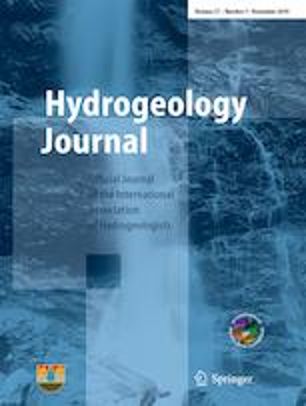| Title: | Review: The evolving understanding of the Great Artesian Basin (Australia), from discovery to current hydrogeological interpretations |
| Authors: |
|
| Abstract: |
The Great Artesian Basin (GAB) in Australia underlies semi-arid and arid regions across 1.7 million km2 or one-fifth of Australia. The basin’s groundwater resources were discovered around 1880 and their development allowed pastoral activities, homestead and town water supplies, and petroleum and mining ventures to exist. The GAB is a multi-layered confined aquifer system, with aquifers in Jurassic and Cretaceous continental sandstones and intervening confining beds of siltstone and mudstone of the constituent Eromanga, Surat and Carpentaria sedimentary basins. The basin is up to 3,000 m thick and forms a large synclinal structure, uplifted and exposed along its eastern margin and tilted southwest. Recharge to the exposed aquifers occurs in the eastern margin, an area of relative high rainfall. The western margin in Australia’s arid centre receives minor recharge. Regional groundwater flow is towards the southern, south-western, western and northern margins. Flowing artesian springs discharge in the southwest margin and have produced carbonate mounds. Although lateral groundwater movement dominates, vertical upwards leakage is considered important. Potentiometric surfaces of the Jurassic and Lower Cretaceous aquifers are still above ground level throughout most of the basin, though pressure drawdowns of up to 100 m have been recorded in recent decades in highly developed areas, and consequently some artesian water boreholes and springs have ceased flowing. Government borehole rehabilitation programs have led to groundwater pressure recovery in some areas. This paper outlines the history of GAB exploration, scientific investigations (hydrogeology, hydrochemistry, isotope hydrology, groundwater modelling) and management, summarising the recent knowledge on the GAB. |
| Citation: | Habermehl MA (2020), Review: The evolving understanding of the Great Artesian Basin (Australia), from discovery to current hydrogeological interpretations, Hydrogeology Journal, vol 28 (1), pp 13-36. https://doi.org/10.1007/s10040-019-02036-6 |
| Keywords: | Australia; History of hydrogeology; Hydrochemistry; Isotope hydrology; Review |


